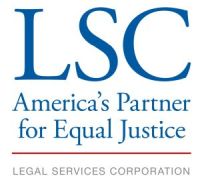Filter your results
Results 1 - 10 of 18. To narrow results enter search keywords or select filters.
A pension plan is an agreement between an employee, their employer and, for some jobs, the union. Sometimes, the employer contributes and sometimes the employee does as well. Employers are not required to have pension plans. A federal law, the Employee Retirement Income Security Act of 1974 (ERISA), sets the standards for private pensions. It also provides guaranteed pensions in some cases.
The federal Railroad Retirement Board handles this benefit program for eligible workers and their families.
General Eligibility
Like Social Security, Railroad Retirement benefits are based on months of service and earnings credits. Employees of railroads engaged in interstate commerce, some related industries, railway associations, and national railway labor organizations qualify for Railroad Retirement after 10 years of credited work.
This pamphlet is a brief summary of the rules adopted by the Idaho Public Utilities Commission (PUC) concerning electric, natural gas, and water termination practices. The rules apply to all residential customers of investor-owned utilities in Idaho under the jurisdiction of the PUC such as Idaho Power, Avista Utilities, Intermountain Gas, Utah Power & Light, Pacific Power & Light, Citizens Utility, and United Water.
These rules do not apply to cooperative utilities or municipally owned utilities.
A permanent resident is someone who has been granted authorization to live and work in the United States on a permanent basis. As proof of that status, a person is granted a permanent resident card, commonly called a "green card." You can become a permanent resident several different ways. Most individuals are sponsored by a family member or employer in the United States. Other individuals may become permanent residents through refugee or asylee status or other humanitarian programs. In some cases, you may be eligible to file for yourself.
In 1977, the Idaho Legislature passed a law which gives tenants a method of forcing landlords to make repairs. This pamphlet describes the law and gives some hints on how to use the law. We recommend you go through the following steps in this brochure if you have previously notified the landlord of the need for repairs and they have not been made.
On May 20, 2009, the President signed into a law a bill containing provisions protecting tenants living in foreclosed buildings. (The Protecting Tenants at Foreclosure Act is Title VII of Public Law 111-22).
These provisions immediately went into effect and are "self-executing", so no federal agency (such as HUD) is responsible for making them work. It is up to advocates to make sure that tenants, landlords, public housing authorities, courts, the legal community, and others involved in the foreclosure process are aware of these new rights for tenants.
En 1977, la legislatura de Idaho pasó una ley que le da al inquilino un método de forzar a los dueños a hacer reparaciones. Este folleto describe la ley y da algunas ideas en como usar la ley. Le recomendamos que usted siga los pasos siguientes si usted anteriormente le ha notificado al dueño de la necesidad de reparaciones y no han sido hechas...
For Tenant Use: 3 Day Demand for Repairs Notice
Fillable PDF Forms
Please click the link for PDF instructions and forms for "Tenant's Request for Repairs" here: https://courtselfhelp.idaho.gov/Forms/housing. Please read all of the instructions before filling out the forms.
For Tenant Use: Request for Repairs Complaint Packet
Fillable PDF Forms
Please click the following link for PDF Instructions and Forms for "Tenant's Request for Repairs": https://courtselfhelp.idaho.gov/Forms/housing. Please read all of the instructions before filling out the forms.
Addressing issues that can lead to unhealthy housing and looks at how unhealthy housing can sometimes be a Fair Housing issue.
Pagination
Close
Filter your results
Type
Topics
Tags
Our Partners
LSC's support for this website is limited to those activities that are consistent with LSC restrictions.

